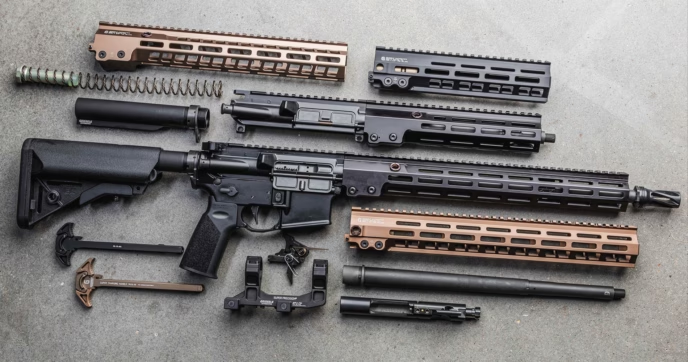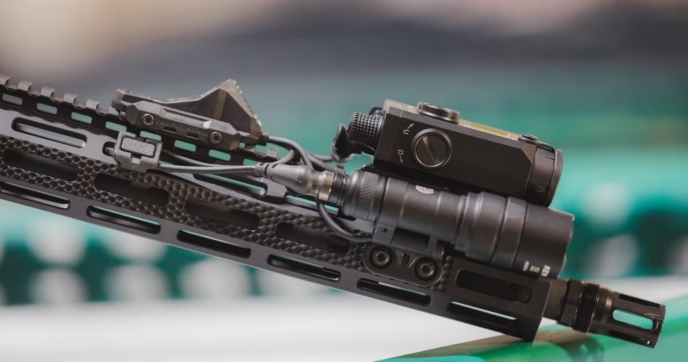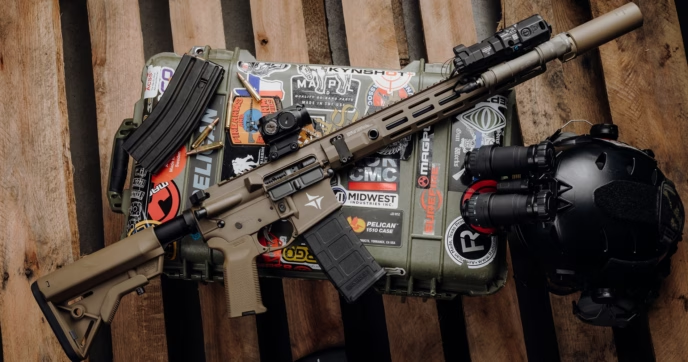Ask any capable marksman, and they’ll tell you the importance of target practice in developing and maintaining their skills. Practice at the range is the fundamental building block of performance—one no amount of dry fire or laser training can replace.
To make the most of your practice session, though, you’ll need a properly appointed range bag.
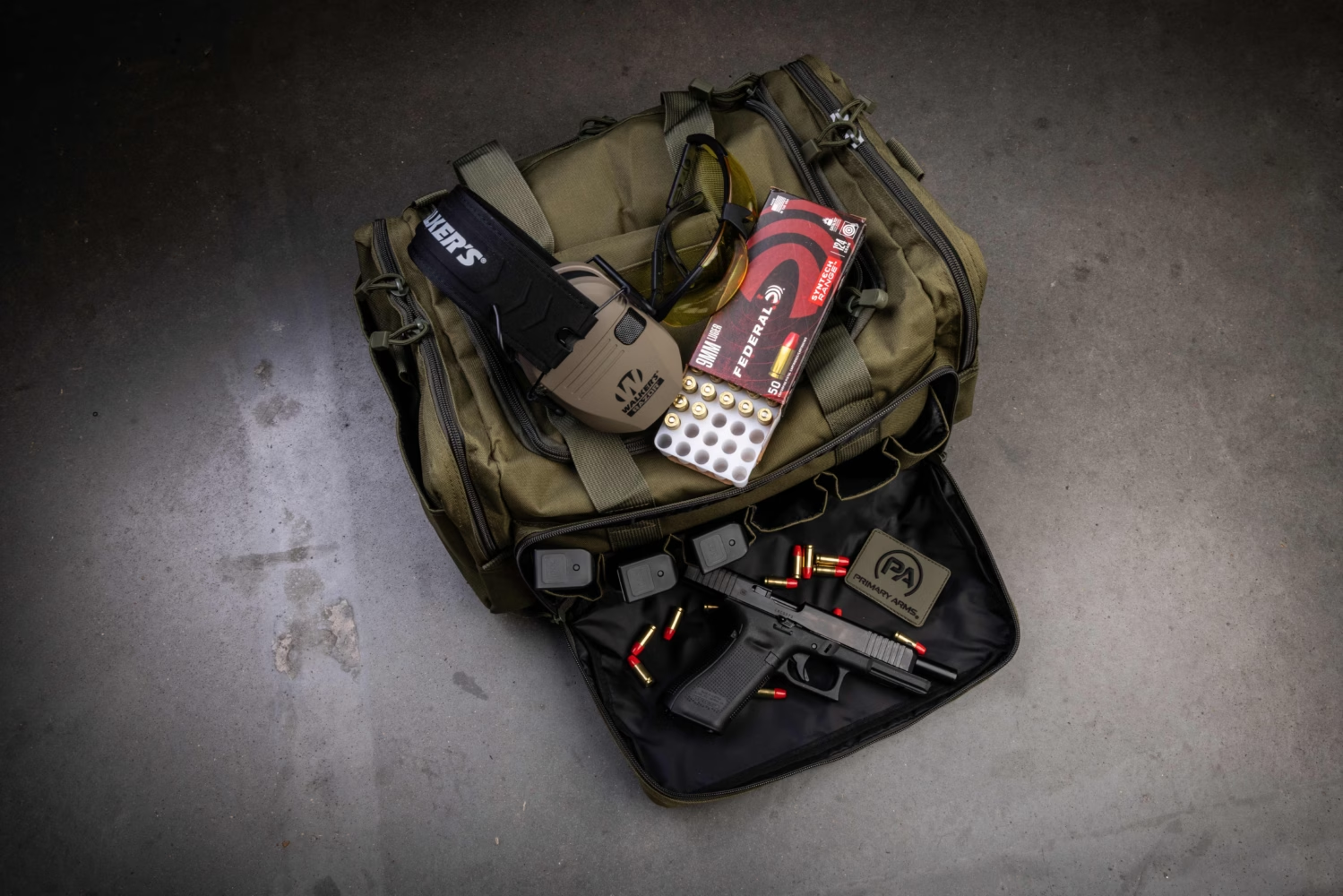
What Is A Range Bag?
A range bag, like the many available from G-Outdoors, is at its most basic nothing more than a container for the essential gear you need for a successful range day. It doesn’t even need to be a bag, necessarily; while duffle-style bags and backpacks are both common, hard-sided cases are also sometimes used for this purpose. All of these types have their pros and cons.
Traditional range bags like the Savior Equipment Specialist 3 Gun Range Bag are quick and easy to tote around. Its compact size makes it convenient for smaller indoor bays while still holding enough gear for a short range session. The double-stitched construction ensures it can handle the weight of heavier items like extra ammo and the bag comes with ample pockets and organization. For a larger duffle-style option, the BlackHeart Respondent Range Bag is available.
Other options include backpack range bags like the GPS Tactical Range Backpack. Backpack-style range bags are great for those who carry a lot of gear, or walk a long distance from their parking location to the firing line, as may be the case at certain outdoor ranges. Backpacks are more efficient for carrying heavier loads because they disperse the weight evenly across both sides of your body, whereas a heavy duffle bag can be awkward to carry over any significant distance.
Lastly, while not true hard-sided cases, more rigid bags like the Allen Competitor Lockable Range Bag offer greater protection for your gear. The more structured design helps to absorb any bumps or bangs you may encounter while toting your gear around, protecting the expensive equipment inside. The Allen Competitor bag is even lockable, further securing your firearms and supplies.
At the end of the day, though, what matters most isn’t what bag you choose—it’s what you put in it.
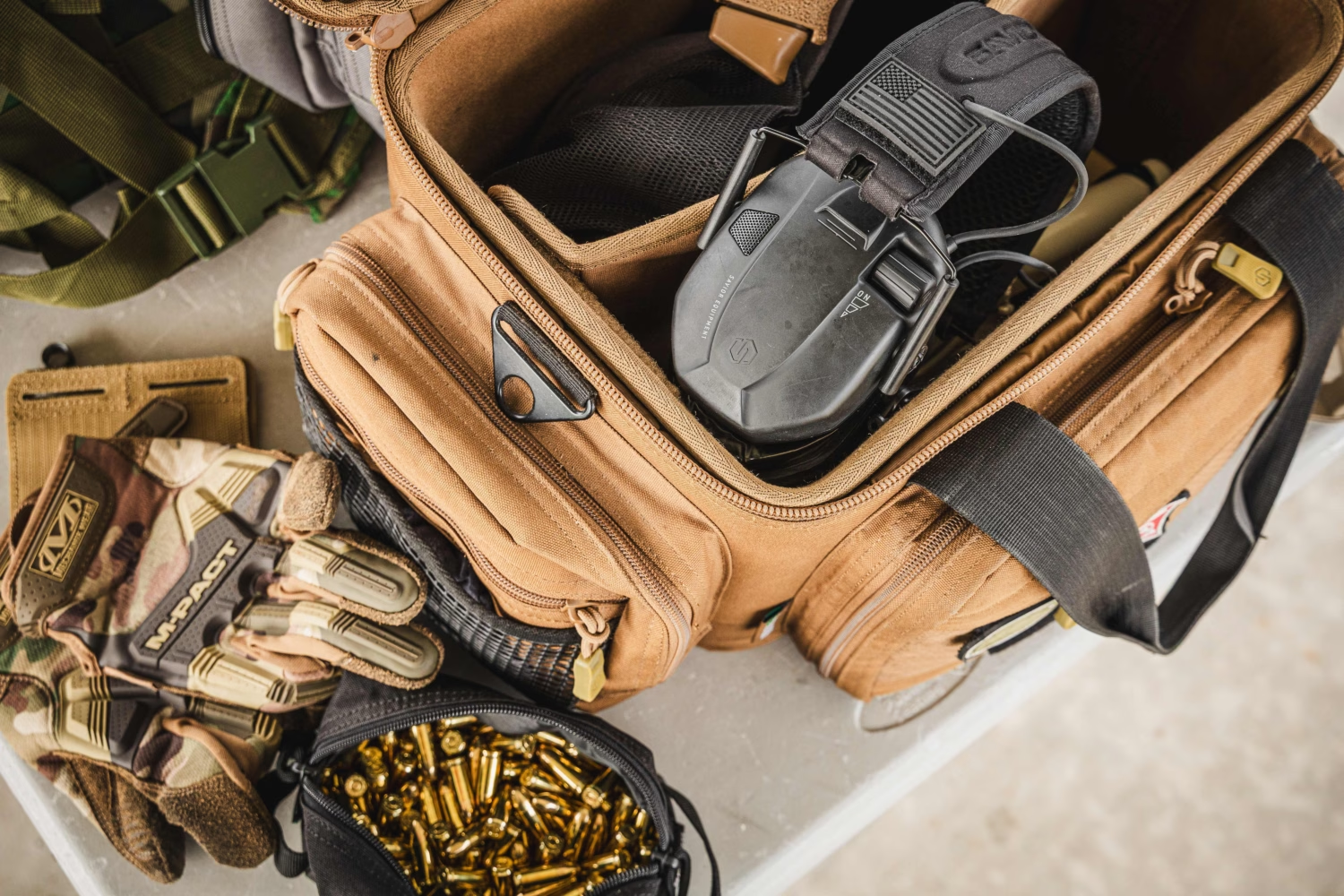
Range Bag Essentials: The Basics
There are a handful of range bag essentials without which no range bag could be called complete. These fundamental pieces of gear are all but required to have a safe, successful range day and should have a permanent place in the bag of every marksman, from the professional to the enthusiast.
Eye And Ear Protection
The importance of ear and eye protection during a range trip should be self-evident, but it’s still worth stating outright. Your sense of hearing and vision are more important than your firearms proficiency and should be prioritized accordingly.
Suitable eye protection should include, at a minimum, impact-rated glasses to protect your eyes not just from possible shrapnel or fragmentation created by a bullet striking steel, rock, or some other hard surface, but also intrusion from back-blasted carbon build-up or unburnt powder. In essence, anything that is coming out of your gun needs to stay out of your eyes, and impact-rated glasses with good coverage are the ideal tool for that task.
That said, they are not necessarily fully sufficient, depending on the type of targets you are using. If you will be engaging steel targets, whether hanging plates or falling steel targets like a Texas star, you should add a brimmed hat to your kit. Even just a baseball cap will do, but since steel targets can create a shower of bullet fragments falling from above, it’s important to have some sort of brim to prevent them from slipping in the gap between your glasses and face.
Ear protection should consist of any suitably-rated noise-reducing plugs or muffs. In-ear or over-ear is almost entirely a matter of personal preference, though if you are going to be firing a particularly loud firearm or practicing in a busy indoor range, you may want to consider using both types to maximize your protection and comfort.
Targets
While you don’t technically need targets, without them, your range day can’t really be considered practice. Targets are the most basic tool with which you can measure your performance, and without them, there’s little way to know if you’re hitting where you think you are.
With that said, if you’re range is equipped with electronic impact detection systems, such as some indoor ranges, or if you plan to do all of your practice on steel, targets may be redundant for you.
That said, even if you plan to primarily use steel targets for your training, it’s worthwhile to include some traditional practice with paper targets in your regimen. While steel targets are excellent for providing immediate feedback in a pass/fail manner, paper targets give a more detailed view of your performance over time, showing you the precise size and distribution of your group rather than just letting you know if you hit or not.
Greater precision in feedback can be had from steel targets by painting them beforehand, but even so, they typically offer much less detail than paper targets, as the splash from the bullet impact can strip the paint from a steel target very quickly.
For example, if you frequently pull your shots to one side, but not to such an extent as to miss the target, you might never know if you exclusively use steel targets. Paper, on the other hand, would make it easy to see that your hits are clustered on one side of the bullseye, rather than in the center.
Staples/Clips
Assuming that you will, like most people, be using some form of paper or cardboard targets, you’ll need a way to affix them to the backer or stand at your range. The most common tools for this are staples or clips.
Staples are cheap, effective, and disposable, but require you to tote around a staple gun to drive them in. Clips, on the other hand, require nothing but themselves, but don’t affix the target with the same amount of force and may only work on thin backers like cardboard and not on target stands made of wood.
Ammunition
It’s not going to be much of a range day without ammo. If you want to practice with your gun, you’re going to need something to feed it. For that reason, a decent quantity of ammunition should usually have a place in your range bag, although if you’re bringing a large variety of ammo types or simply a ton of ammo, you may also consider a separate, designated ammo container.
Spare Magazines
Some people enjoy loading magazines at the range. They find that it allows them time to reflect on their performance, plan their next round, or simply enjoy taking their time. For the rest of us, spare magazines are an excellent idea.
If you are not blessed with unlimited time at the range, then one of the best ways to make the most of the time you do have is to load as many magazines as possible in advance. This saves range time for actual practice, rather than the tedium of thumbing rounds in.
Additionally, spare magazines can be helpful if you have multiple users working with one firearm, as it allows one person to load fresh magazines while the other runs a drill or stage. They’re a good insurance policy against malfunction or mishaps—no one wants to spend their precious range time scrubbing sand out of a dropped magazine when they could just grab a new one from their bag.
First Aid
Gun safety is of paramount importance, and at no time should anyone ever fail to follow the four rules of gun safety. Unfortunately, accidents do happen regardless, and even if your adherence to safety rules is impeccable, you can’t control the behavior of the people around you. For that reason, every range bag should contain a basic first aid kit.
We offer a detailed explanation of what that should contain in our article on building a first aid kit for the gun range, but the key ingredients are basic implements to treat minor wounds and abrasions and a tourniquet for larger injuries. Bear in mind, though, that first aid tools such as these are all but useless without the knowledge of how to use them effectively, so we heavily recommend taking a course in basic emergency first aid.
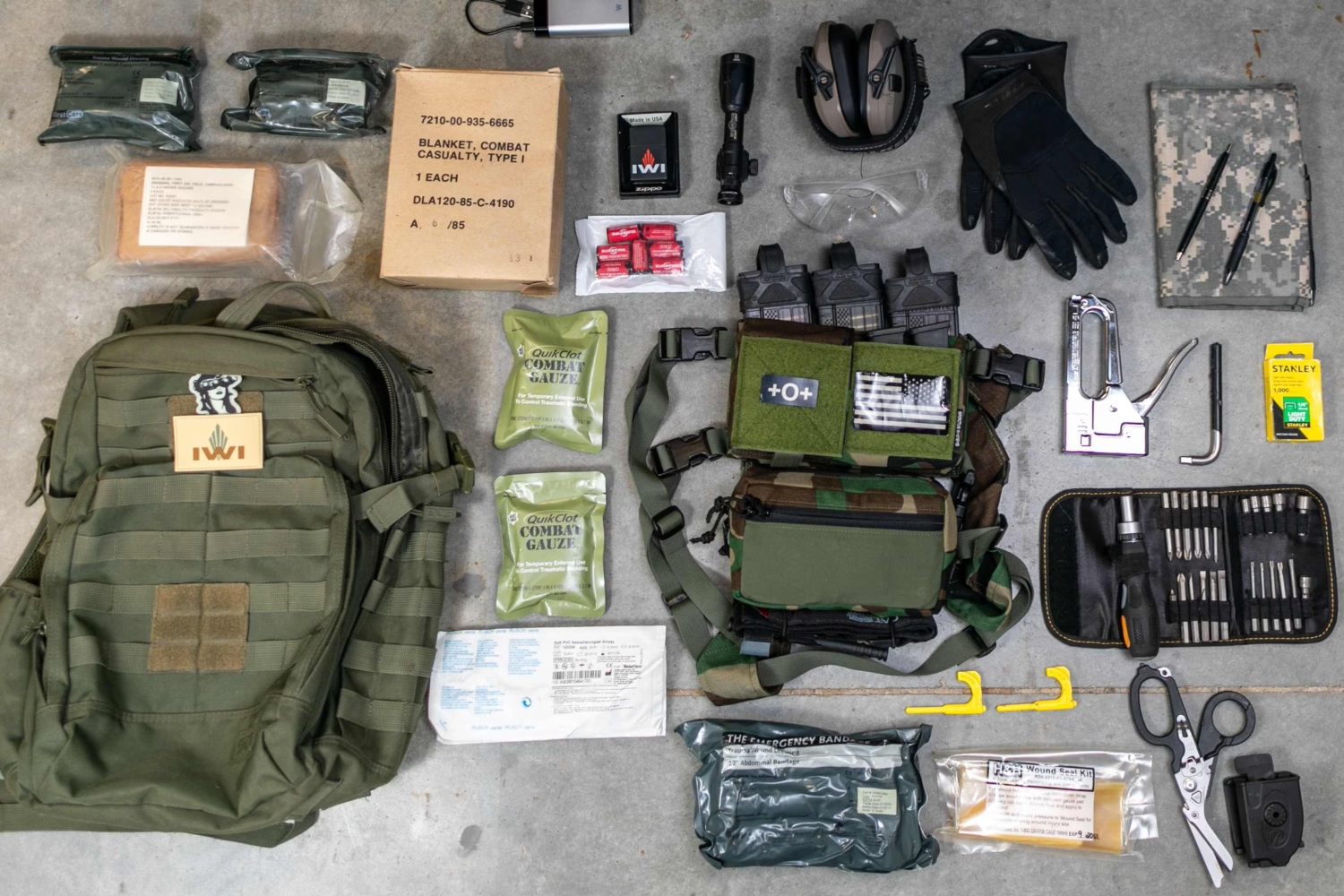
Range Bag Essentials: Advanced Gear
Not everyone is going to be satisfied with just the basics. Some people are always going to want to be better equipped for the little challenges life likes to throw at you. Others have simply learned from experience—after the third or fourth time the lack of a tool or piece of gear ends your range day, you start keeping in your bag whether you expect to need it or not. These next few items are the sort of thing that not everyone keeps in their range bag, but you’ll tend to find more often than not in the bags of seasoned, avid marksmen.
Batteries
There are few things more disappointing than driving to the range, setting up your targets, loading your mags, and shouldering your rifle only to realize that your red dot is dead. A pair of spare batteries for each of your optics, lights, lasers, or other gadgets can spare you a lot of headache and possibly a wasted trip.
Tools
It’s a simple fact of life that from time to time, things go wrong. It can be anything from a screw working loose, to a particularly stubborn stuck case after a misfeed, to a carbon-locked suppressor. When these things happen, it can sometimes signal the end of your range day. Or, if you have the tools on hand to address the problem, it can be nothing more than a minor blip in an otherwise pleasant session.
While it wouldn’t be at all practical to lug the entire tool chest out to the range every time you go, a handful of oft-used tools can be a huge help. This can range from something as basic as a multitool to a sophisticated kit like The Works Kit from Fix It Sticks.
Each tool you add increases your capability to address the unexpected but also adds to the size and weight of your bag. Finding the right balance between being unprepared and lugging around the kitchen sink is going to be a personal choice.
A basic bit kit and driver, sight tool, and a pair of pliers will go a long way toward addressing any sudden issues without adding a great deal of bulk, though.
Spare Parts
In the same vein as spare batteries, a handful of spare parts can be awfully convenient when needed. If you like to tinker on your guns at the range, a handful of extra springs and detents—something akin to the Whoops! Kit from Anderson Manufacturing—is an excellent idea. If you think scouring your carpet for a launched buffer detent is a nightmare, you will not enjoy trying to find one in the grass and dirt.
Some parts are not worth carrying, either because they are unlikely to be needed or because the effort involved in replacing them in the field is excessive. A spare buffer spring is fine, but an extra barrel is just pointless weight. Similarly, for AR-15s at least, it’s probably not worth carrying around spare extractors or ejectors. While both parts can and do wear out or fail, a spare bolt will cover you for that event and more. A complete bolt also takes less than a minute to swap in and requires no tools, unlike replacing an extractor.
CLP/Lubricant
A significant number of failures are caused by an insufficiently lubricated or excessively fouled action. Both of these issues can be remedied quite easily by a multipurpose cleaning agent and lubricant like BreakFree CLP.
While a cleaning kit is often recommended alongside CLP, it’s not strictly necessary for the range. Your range bag isn’t intended to be a full-service firearms maintenance solution, it’s intended to be a stopgap measure to keep your guns running long enough to finish out the day. If your firearm is malfunctioning due to fouling, you don’t need to clean it spotless, you just need to get the bulk of the gunk out so it can run again. For that, a bottle of CLP, a handful of paper towels or patches, and maybe a single brush and pick will suffice.
Gloves
It’s hard to overstate the value of a good pair of tough gloves at that range. While we wouldn’t really claim they are necessary, they are often terribly convenient and make for a more pleasant experience.
The first use case for them is to protect your hands from all things sharp, pointy, or otherwise unpleasant to grab. Loose staples and splintered wood on target stands, sharp edges on steel plates or frames, even just the cheese grater-like profile of an exposed quad rail—all of it can start to wear on your skin after a long day.
Additionally, gloves can be quite handy for when things get hot. Every time you pull the trigger, you impart a small amount of heat into your firearm. Over many rounds, that adds up, sometimes to the point of being uncomfortable or dangerous to touch. A good pair of gloves provides an important insulating layer that allows you to handle your firearm without having to wait around for it to cool.
Be warned, though, that gloves do not make your hands invincible. Reasonable caution must still be used, particularly with hot firearms. While a handguard will rarely get hot enough to melt your gloves, a suppressor can do so easily, so think twice before grabbing your can.
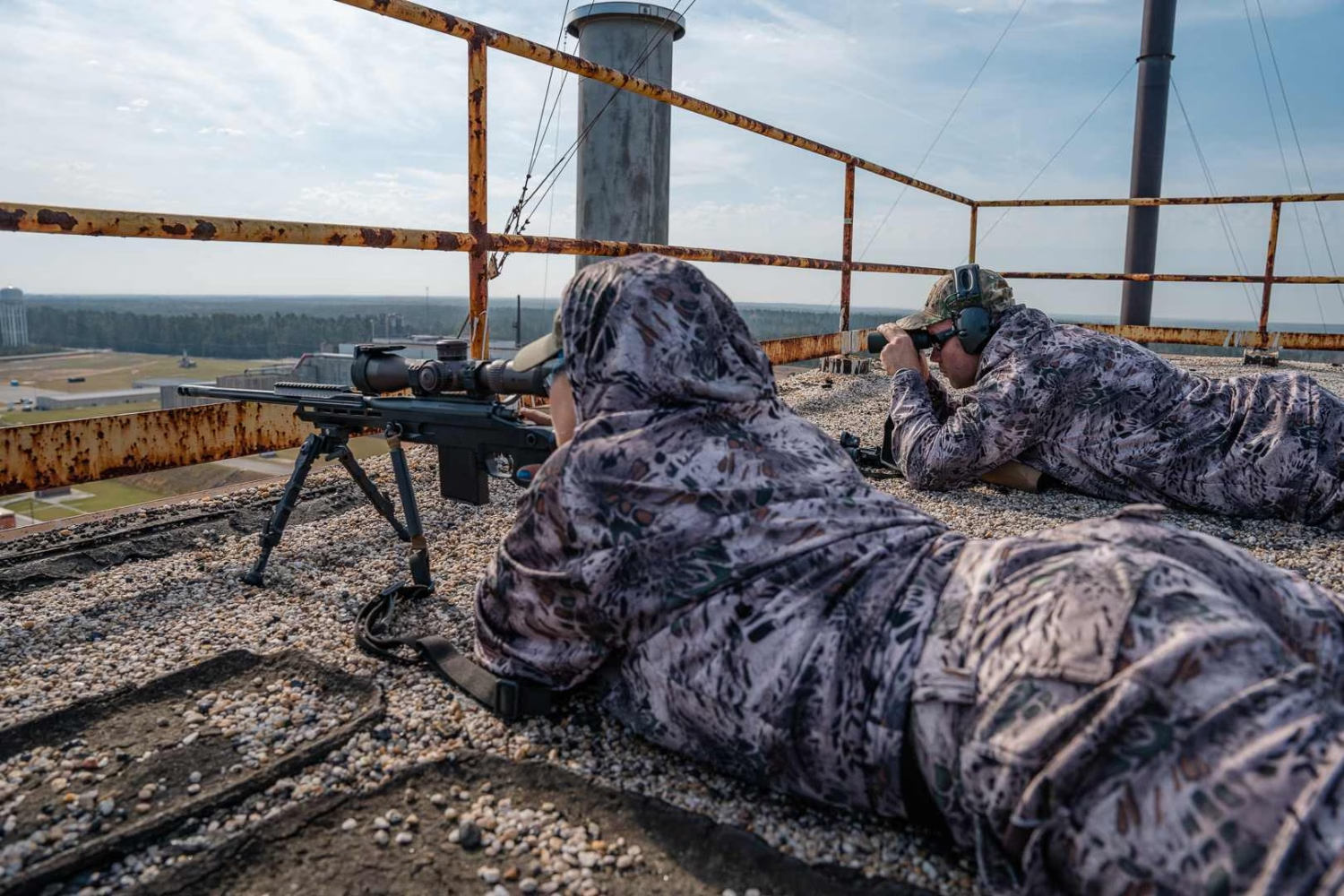
Range Bag Essentials: Expert Level
As we move up the ladder from basic, universal equipment to more sophisticated gear, the choices and recommendations become more specialized. Neither everyone nor every range trip will necessitate every piece of equipment in this tier. But, if you want to push your performance to the limit and maximize your practice, the following tools may come in handy.
Chronograph
A chronograph is a device that measures the speed of a projectile—in this case, a bullet. This is particularly useful for long-range purposes, as knowing the muzzle velocity of your allows you to feed more accurate information into your ballistic calculator, thereby receiving more accurate dope.
When pursuing hits at very long ranges, the margin of error for your calculations becomes exponentially slimmer. While you may not have trouble landing effective hits at 5-800 yards using the muzzle velocity numbers printed on the box, when you start pushing 1200 yards or more, the precision of a chronograph will show its value.
Shot Timer
For nearly any type of serious training, a shot timer like the PACT Club Time III is an invaluable tool for measuring progress and comparing performance. Group size is a strong indicator of performance, but it’s only one piece of the puzzle, particularly for those training their defensive skills. For personal defense, speed matters just as much as accuracy.
A shot timer allows you to measure the length of time it takes you to complete various actions or drills, ranging from simple ones like drawing from concealment or firing after reloading to complex multi-target stages.
Most also offer a random start function, which sounds a buzzer at a random time after the button is pressed. This is an important tool because it allows you to practice responding to an outside stimulus, training your reaction speed, rather than just drawing at the moment you decide.
Weather Meter
This piece of equipment is also primarily used for long-range shooting. A weather meter does more or less what the name would suggest, measuring various atmospheric conditions including temperature, wind speed, wind direction, humidity, and more. While all of these measurements have some effect on ballistics and are usually worth inputting into your ballistic calculator, wind speed and direction are by far the most valuable.
Being able to precisely measure the speed of the wind at your firing position allows you to not only accurately calculate your holds, but also develop your ability to intuit wind speed without needing a weather meter. While few if any will ever be as precise as the tool, having a basic ability to make an informed guess at the speed and direction of the wind can be a valuable skill for competition or hunting.
Spray Paint
While particular only to those who will be practicing with steel targets, spray paint is an excellent inclusion in a range bag. Steel targets provide excellent visual and auditory feedback, and do so almost instantaneously, but they are only really capable of telling you whether or not you hit, not where you hit—at least, until you paint them.
By painting your targets, you’ll usually be able to see the price location of your bullet impact. It’s not very useful for shooting groups, since a handful of rounds in relatively close proximity will quickly become a single, ragged bare spot, but it’s much more precise than starting with bare steel.
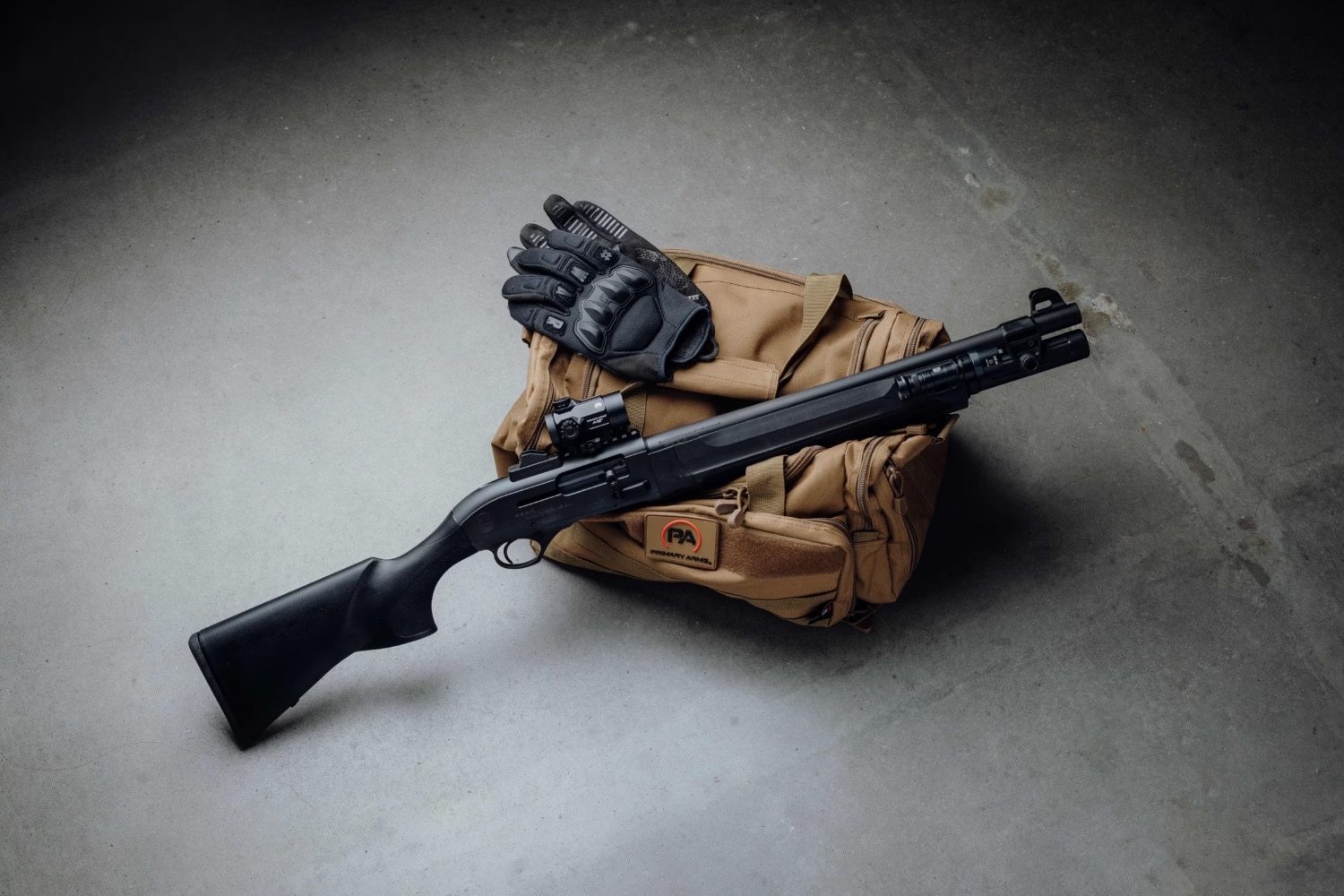
Conclusion
A good range bag is well worth its weight, and can often be the difference between a successful, enjoyable range trip and a wasted one. By equipping yourself with both the basic essentials necessary for the task and a few tools and spare resources for any unexpected circumstances, you can ensure that every range trip is worth the time.

